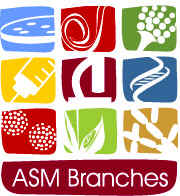| |
Richard L. Whitman is the station chief and a research ecologist at the U.S. Geological Survey, Great Lakes Science Center, Lake Michigan Ecological Research Station. Dr. Whitman received his Ph.D. from Texas A&M University in Wildlife and Fisheries Science. He was an associate professor at Indiana University NW for ten years and served as chief scientist for Indiana Dunes National Lakeshore for six years before becoming the chief of the Lake Michigan Ecological Research Station, where he has been for the past 15 years. He is currently acting Chief of the Environmental Health and Restoration Branch of the Great Lakes Science Center. He is an internationally recognized expert in the occurrence and distribution of indicator bacteria in temperate waters. His scientific contributions include descriptions of new species, new exotic species, discovery of new, non-enteric sources of indicator bacteria, and development of modeling paradigms for recreational water quality.
It All Comes Out in the Swash
Abstract: The Chicago 63rd beach in southwest Lake Michigan was studied to determine the influence of nearshore hydrodynamic effects on the variability of E. coli concentration in both knee-deep and offshore waters. Explanatory variables that could be used for identifying potential bacteria sources and transport mechanisms, such as bed shear stress due to a combined wave-current boundary layer near the opening of the embayment and wave runup on the beach surface, were derived from existing standard wave and current parameters. Based on the observation that onshore waves tend to result in a stimulated hydrodynamic system in the beach embayment, a further multiple linear regression analysis of onshore-wave cases indicated the significance of sediment resuspension and the interaction of swash with gull-droppings in explaining the variability of bacteria concentration in the knee-deep water.
Fall 2009 Home
|
|



